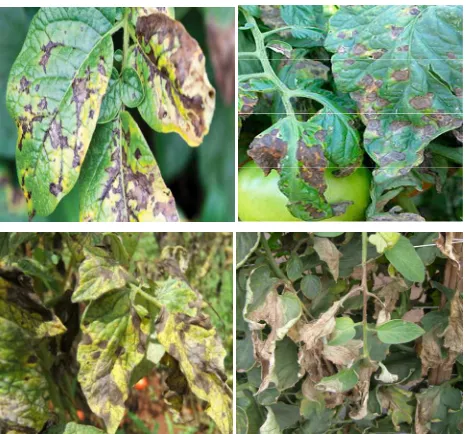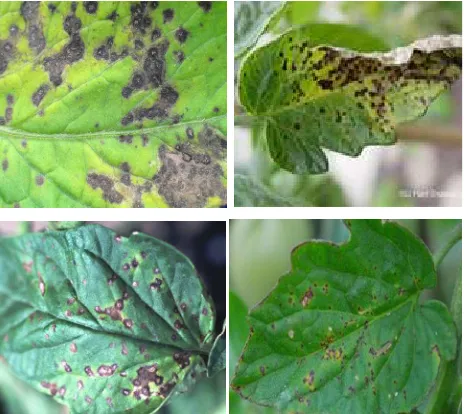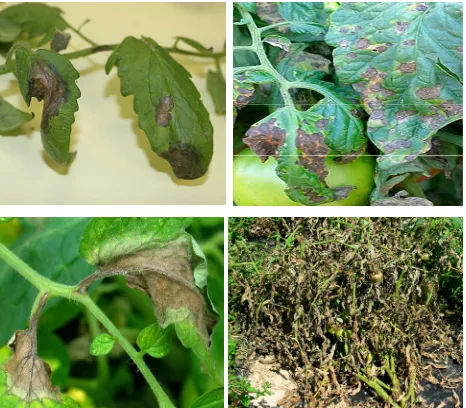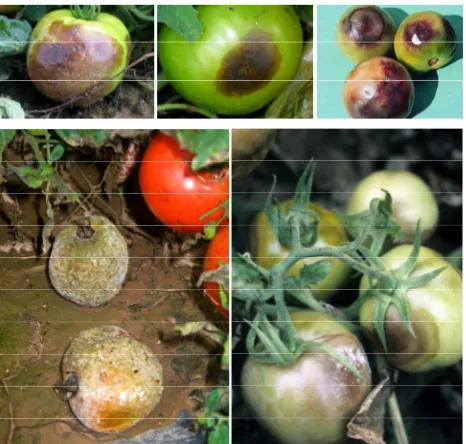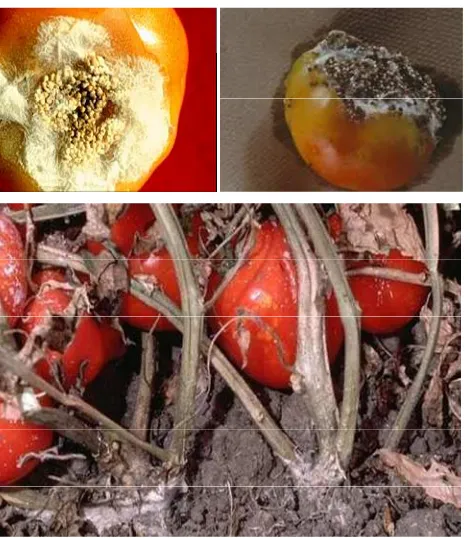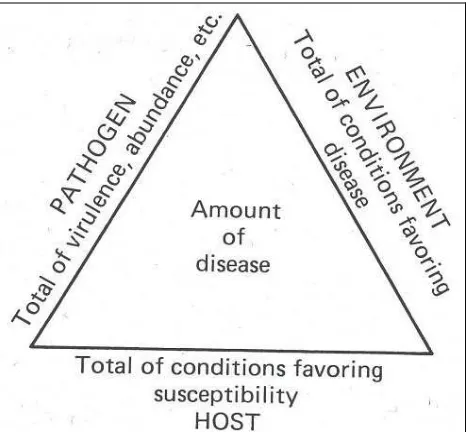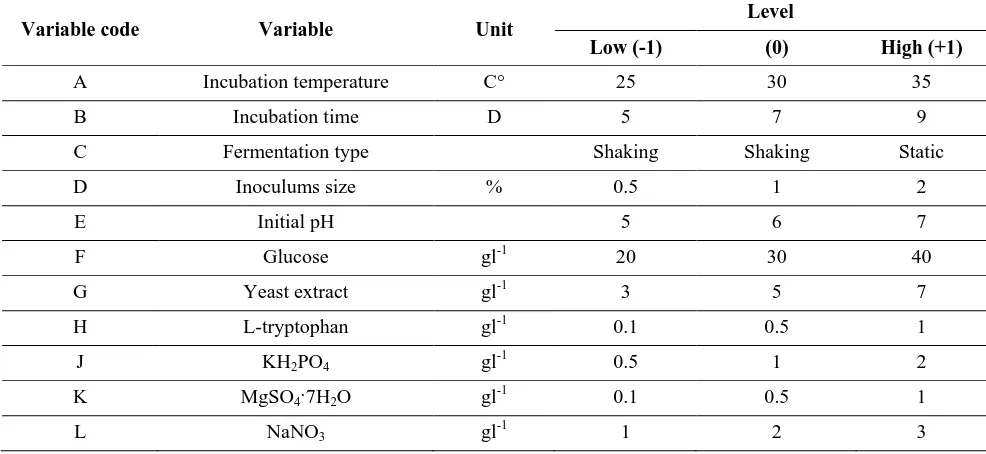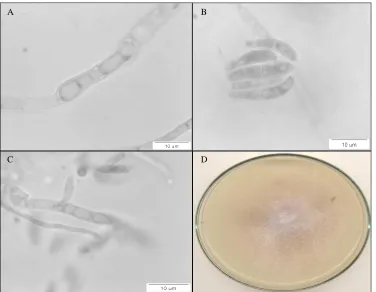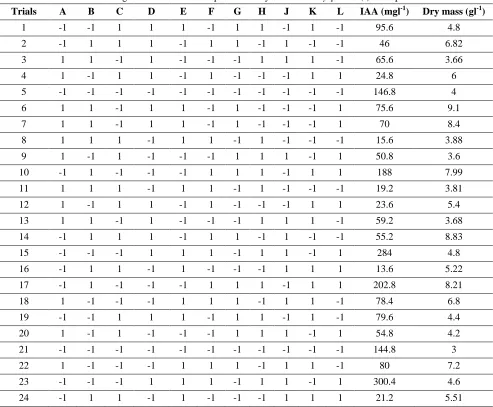ISSN 2449-8955
EJBRAT 7(4) 2017
Volume 7
Number 4
October-December 2017
European Journal
of Biological Research
MNiSW points 2016:
11
Index Copernicus 2016:
95.65
European Journal of Biological Research, Volume 7, Issue 4, October-December 2017 European Journal of Biological Research
ISSN 2449-8955
Editor-in-Chief Tomasz M. Karpiński
Poznań University of Medical Sciences, Poznań, Poland
Co-Editor Artur Adamczak
Institute of Natural Fibres and Medicinal Plants, Poznań, Poland
Editorial Secretary
Joanna Bródka, Poznań, Poland
Statistical Editor
Paweł Zaprawa, Lublin, Poland
Language Editor Jan Nowacki, London, UK
Scientific Editorial Board Tamara Bayanova, Apatity, Russia Payam Behzadi, Tehran, Iran
Alexander Ereskovsky, Marseille, France Agnieszka Gałuszka, Kielce, Poland Vittorio Gentile, Naples, Italy Stanisław Hałas, Lublin, Poland Fadi Hage Chehade, Beirut, Lebanon Afaf M. Hamada, Stockholm, Sweden Sven Herzog, Tharandt, Germany Liviu Holonec, Cluj-Napoca, Romania Miłosz A. Huber, Lublin, Poland
Shri Mohan Jain, Helsinki, Finland Wouter Kalle, Wagga Wagga, Australia Tomasz Klepka, Lublin, Poland Nikolaos Labrou, Athens, Greece Igor Loskutov, Sankt Petersburg, Russia Ákos Máthé, Sopron, Hungary
Ahmed El-Mekabaty, Mansoura, Egypt Artem V. Mokrushin, Apatity, Russia Shahid M. Mukhtar, Birmingham, USA Robert Pal, Pécs, Hungary
Amal K. Paul, Kolkata, India Rajiv Ranjan, Narkatia Ganj, India Antonio Tiezzi, Viterbo, Italy
Timotej Verbovšek, Ljubljana, Slovenia Vladimir K. Zhirov, Apatity, Russia
List of Peer-Reviewers http://www.journals.tmkarpinski.com/index.php/ejbr/pages/view/reviewers
Author Guidelines http://www.journals.tmkarpinski.com/index.php/ejbr/about/submissions
More information www.journals.tmkarpinski.com/index.php/ejbr
DISCLAIMER
The Publisher and Editors cannot be held responsible for errors and any consequences arising from the use of information contained in this journal; the views and opinions expressed do not necessarily reflect those of the Publisher and Editors, neither does the publication of advertisements constitute any endorsement by the Publisher and Editors of the products advertised.
Cover: http://openwalls.com/image?id=20115, Licence Creative Commons Attribution 3.0 Unported (CC BY 3.0)
Copyright: © The Author(s) 2017. European Journal of Biological Research © 2017 T.M.Karpiński. All articles and abstracts are open-access, distributed under the terms of the Creative Commons Attribution Non-Commercial 4.0 International License, which permits unrestricted, non-commercial use, distribution and reproduction in any medium, provided the work is properly cited.
European Journal of Biological Research, Volume 7, Issue 4, October-December 2017
Contents
271-290
291-298
299-308
309-314
315-323
324-336
337-347
348-359
360-365
366-373
374-381
Scorpion venom: pharmacological analysis and its applications Mukesh Kumar Chaubey
Comparison of biofilm-producing Enterococcus faecalis, Enterococcus faecium, and unusual Enterococcus strains
Anna Sieńko, Dominika Ojdana, Piotr Majewski, Paweł Sacha, Piotr Wieczorek, Elżbieta Tryniszewska
Fungal diseases on tomato plant under greenhouse condition Rabab Sanoubar, Lorenzo Barbanti
Management of fungal plants diseases Nadia Ghanney
Statistical optimization as a powerful tool for indole acetic acid production by Fusarium oxysporum
Ghada Abd-Elmonsef Mahmoud, Hassan H. A. Mostafa
Anthelminthic/larvicidal activity of some common medicinal plants
Kumari Sunita, Pradeep Kumar, Mohammad Aasif Khan, Sadaf, Syed Akhtar Husain, D. K. Singh
Mycological and enzymatic studies on fresh beef meat sold in Taiz City, Yemen M. A. Abdel-Sater, F. A. Al-Sharjabi, Elham S. Al-Ashwal
Immunomodulatory and hematological effects induced by diclofenac, ibuprofen or paracetamol toxicity in Swiss albino mice
Soha Gomaa
Isozyme variants in two natural populations of Lymnaea luteola Arvind Kumar Singh, Naveen Yadav, Gurvachan Singh
Virulence genes and antibiotic resistance of Yersinia enterocolitica strains isolated from children
Barbara Kot, Małgorzata Piechota, Kinga Jakubiak
Ingredients of popular fruit teas in Poland
ISSN 2449-8955 European Journal
of Biological Research Review Article
European Journal of Biological Research 2017; 7 (4): 271-290
Scorpion venom: pharmacological analysis
and its applications
Mukesh Kumar Chaubey
Department of Zoology, Mahatma Gandhi Post Graduate College, Gorakhpur - 273001, U.P., India; E-mail: mgpgc@rediffmail.com
ABSTRACT
Scorpions belong to class: Arachnida, order: Scorpionida represented now by approximately 1500 species. These are one of the most ancient group of the animals on the earth conserving their morphology almost unaltered and are the most successful inhabitants of the earth. Scorpions when stimulated secrete venom which is a cocktail of variable concentration of neurotoxins, cardiotoxins, nephrotoxins, hemolytic toxins, phosphodiesterases, phospholipases, hyaluronidase, glucosaminoglycans, histamine, seratonin, tryptophan and cytokine releasers. According to an estimate, frequency of deaths caused by scorpion sting is higher in comparison to that of caused by snake-bite. Almost all of these lethal scorpions except Hemiscorpious species belong to scorpion family Buthidae comprising 500 species. Scorpion venoms show variable reactions in envenomated patients. However, closer the phylogenic relationship among the scorpions, more similar the immunological properties. Furthermore, various constituents of venom may act directly or indirectly and individually or synergistically to exert their effects. Scorpion stings cause a wide range of conditions from severe local skin reactions to neurologic, respiratory and cardiovascular collapse. Lethal members of Buthidae family include Buthus,
Parabuthus, Mesobuthus, Tityus, Leiurus,
Andro-ctonus and Centruroides. Besides their lethal
properties, scorpion venoms have some unique properties beneficial to mankind. These contain anti-insect, antimicrobial and anticancer properties and thus, can play a key role in the insect pest management programmes, treatment of microbial infection and in the treatment of various cancer types.
Keywords: Scorpion venom; Envenomation; Neurotoxins; Ion channel blockers; Anticancer peptide; Antivenom.
1. INTRODUCTION
Scorpion sting is a major health problem in under developed tropical countries especially in poor communities. According to an estimate, frequency of deaths caused by scorpion sting is higher in comparison to that of caused by snake-bite [1]. Scorpions belong to class: Arachnida, order: Scorpionida. Scorpion has flattened and elongated body with four pairs of legs, a pair of claws and a segmental tail that has a poisonous spike at the end. Scorpion varies in size according to age and species from 1-20 cm in length. These can be found outside their normal territory when they accidentally crawl into luggage, boxes, containers or shoes, and are transported to home via human unwillingly. These are one of the most ancient group of the animals on
Received: 14 July 2017; Revised submission: 25 September 2017; Accepted: 27 September 2017
Copyright: © The Author(s) 2017. European Journal of Biological Research © T.M.Karpiński 2017. This is an open access article licensed under the terms of the Creative Commons Attribution Non-Commercial 4.0 International License, which permits
272 | Chaubey Scorpion venom: pharmacological analysis and its applications
European Journal of Biological Research 2017; 7 (4): 271-290
the earth represented now by approximately 1500 species conserving their morphology almost unaltered [2, 3].
Scorpions are not aggressive and do not hunt but wait for its prey. Scorpions being nocturnal in habit and capture its prey during night. They hide in crevices and burrow during day time to avoid the light. Human stinging occurs accidentally when scorpions are touched during resting and most of the stings occur on hands and feets. Scorpions are well equipped with a pair of pincer like pedipalps. Thus, peoples question why they need to produce venom at the same time. This is because most scorpions are opportunistic predators lacking the speed of its prey like insects and thus they are not choosy in their prey selection. Also obtaining relatively large prey like mouse and large beetles is a quite tough task for a scorpion. In such condition, pedipalps may prove insufficient to manage prey as quickly as possible. Thus, venom which is nature’s gift provided to scorpions comes into play. A second advantage of venom is the presence of enzymes as venom’s constituents with diverse activity. These enzymes initiate the process of digestion in tissue of the prey stung before consumption. Scorpion venom is an effective defensive device, which serves to deter and incapacitate the opponent. Hissing and aggressive defense posture is usually enough to deter most animals including human. When deterrence proves inadequate scorpions defend itself by injecting venom into the body of enemy. Thus, the main purpose of production of venom in scorpions is to secure food and self-protection.
Venom glands, the factory of scorpion’s venom are located on the lateral side of tip of sting. These are made of different types of tall columnar cells. Of these cells, one type produces toxins while others produce mucus. Potency of scorpion’s venom varies from species to species with some producing only a mild flu while other producing death. Scorpion stings cause a wide range of conditions from severe local skin reactions to neurologic, respiratory and cardiovascular collapse. Scorpion venoms exert their action mainly by affecting specific functions of the ion channels [4-6]. Among well-characterized toxins peptides from venom of the scorpion, most of them belong to family Buthidae. Buthoid venom has been reported for its severe consequences against a wide variety of
vertebrate and invertebrate organisms and its toxicity is attributed to the presence of a large variety of basic polypeptides having three to four disulfide bridges [4, 7]. Due to heterogeneous nature, scorpion venoms show variable reactions in envenomated patients. However, closer the phylo-genic relationship among the scorpions, more similar the immunological properties. Furthermore, various constituents of venom may act directly or indirectly and individually or synergistically to exert their effects. In addition, differences in amino acid sequences of each toxin accounts for their differences in function, pharmacology and immu-nology. Thus, any alteration in amino acid sequence may result in modification of function, pharma-cology and immunology of toxin.
Differences in pathogenecity and level of toxicity of scorpion venom are actually due to diversity in toxin peptides and differences in amino acids in active site region of toxin peptides. This leads to diversification in their mode of action in different venomous scorpion groups in different climatic conditions and finally results into ecological adaptation in due course of evolutionary journey. Scorpions when stimulated secrete a small quantity of transparent venom called prevenom. If stimulation continues, cloudy, dense and white coloured venom is released subsequently. Prevenom contains a concentration of high K+ salt and several peptides including some that block K+ channels. This prevenom causes significant toxicity and scorpions use it as a highly efficacious predator deterrent and for immobilizing small prey while conserving metabolically expensive venom until a certain level of stimuli is reached [8]. That is why scorpions are known to be economical in their use of venom.
Production and storage of venom is an expensive metabolic process especially for species of extreme ecosystems. Other than antimicrobial peptides, all neurotoxins in venom are highly folded disulfide bridged molecules [9]. Low yields and reduced expression of these highly folded peptides in recombinant system indicates unique and difficult folding and storage requirement [10]. About fifty scorpion species distributed throughout the world have been proved lethal to human [11, 12]. Almost all of these lethal scorpions except
273 | Chaubey Scorpion venom: pharmacological analysis and its applications
European Journal of Biological Research 2017; 7 (4): 271-290
Buthidae comprising 500 species. Lethal members of Buthidae family include Buthus, Parabuthus,
Mesobuthus, Tityus, Leiurus, Androctonus and Centruroides. Common scorpions and their
distri-butions are:
1. Buthus: Mediterranean area
2. Parabuthus: Southern and Western Africa 3. Mesobuthus: Asia
4. Tityus: Central and South America 5. Leiurus: Northern Africa
6. Androctonus: Northern Africa to South-East Asia 7. Cetruroides: South-West USA, Mexico, Central America
8. Heterometrus: Asia
9. Pandinus: Tropical Africa and Arabian Peninsula. Scorpions mostly occur in temperate and tropical habitats of the world. They are well adapted to survive in extreme thermal environments, sometimes constituting a major portion of the total animal biomass in such environments. These are considered among the most successful inhabitants of the earth [13, 14]. Although numerous factors contribute to the success of scorpions, the ability to produce and deliver highly toxic venom is an important determinant of their success.
Scorpion venom is composed of water, salts, biogenic amines, peptides and enzymes. Venom of several scorpion species has been well characterized and various toxin peptides possessing the majority of biological activities have been isolated [15]. In venom mixture, there are many peptides that are specifically active against vertebrates, invertebrates or both. Toxin peptides of all these three groups are well characterized and includes peptides that target all the major ion channels such as Na+, K+, Cl-, Ca++ and rynodine sensitive Ca++ channels [15, 16]. Potency of venom is mainly due to its ability to target multiple types of ion channels simultaneously resulting in a massive and recurring depolarization of nerve fibres that disables or kills prey or predators.
Generally scorpion venom possesses variable concentration of neurotoxins, cardiotoxins, nephro-toxins, hemolytic toxins, phosphodiesterases, phospholipases, hyaluronidase, glucosaminogly-cans, histamine, seratonin, tryptophan and cytokine releasers. The most potent toxin is neurotoxin, which is divided in two classes viz. short chain and long chain peptides. Toxin peptides of both these
classes are heat stable with low molecular weight. These are responsible for cell impairment in nerves, muscles and the heart by altering ion channel permeability. Long chain polypeptide neurotoxins cause stabilization of voltage dependent Na+ channel in open position leading to continuous prolonged repetitive firing of somatic, sympathetic and parasympathetic neurons. These repetitive firings result in autonomic and neuromuscular over excitation preventing normal nerve impulse trans-mission. Further, it results in excessive release of neurotransmitters such as acetylcholine, glutamate, aspartate, epinephrine and norepinephrine.
Short chain polypeptide scorpion toxins are K+ channel blockers. Binding of these toxin peptides is reversible but with different binding affinities. Stability of these neurotoxins is due to four-disulfide bridges that fold neurotoxin into a very compact three-dimensional structure, thus making it resistant to variation in hydrogen ion concentration and temperature. However, reagent that can break disulfide bridges can inactivate this toxin by unfolding it. Antigenicity of these toxins depends on the length and number of exposed regions out of the three-dimensional structure.
Fat tailed scorpion, A. australis has many toxin peptides, which are selectively lethal to mammals. This selectivity of venom can hardly be explained by food choice. This suggests a possible selective pressure for venom production against mammalian predators. It also helps to acquire other vertebrate prey as well. Also, if food acquisition is the main selective pressure for venom against vertebrates, then there should be higher
compo-sition of vertebrate toxins in large species like
P. imperator. The hypothesis for deterrence is
274 | Chaubey Scorpion venom: pharmacological analysis and its applications
European Journal of Biological Research 2017; 7 (4): 271-290
then arch their tail over their body to inject their venom into the prey, sometimes more than once. Scorpions regulate how much venom should be injected with each sting. The striated muscles in the sting regulates amount of venom ejected, which is usually 0.1-0.6 mg. If entire supply of venom is used, scorpion must require several days to regain venom supply.
Although poisonous scorpions are classified taxonomically into several genera, yet the mode of action of their venom is quite similar. Scorpion venoms contain neurotoxic peptides in low abundance with great diversity in their mode of action. These neurotoxin peptides are low in abundance in a complex mixture of venom having a majority of the biological effects towards the affected victim. Stings affect peripheral nervous system resulting in symptoms like intense pain at the site of sting, altered heart activity and paraesthesia [17].
In an experiment with labeled scorpion venom, amount of venom venom was found 28% in blood, 30% in muscle, 13% in bone, 12% in kidney and 11% in liver within five minutes after intravenous administration. Scorpion venom is excreted through renal and hepaticbiliary pathways. The maximum renal uptake of 32% at thirty minu-tes drops to 22% at three hours suggesting that excretion of venom through kidney is slow [18]. Scorpion venom in the animal body has a half-life of 24 hour indicating a slow clearance with mean residence time of 33.7 hours in the body and 26 hours in the peripheral compartments [19].
2. INSECTICIDAL PROPERTY OF SCORPION VENOM
Due to species-specific activity of scorpion toxins, efforts have been made to identify insect selective toxins that can be used to develop biopesticides as a safer alternative to replace chemical insecticides [20-22]. On the basis of mode of action, anti-insect scorpion toxins have been divided into three classes viz. (i) alpha toxins which are strictly selective for insects (ii) excitatory insect selective scorpion toxins, and (iii) depressant insect selective neurotoxins [23-25]. Anti-insect α-toxin peptides bind to voltage-dependent sodium channels with high affinity [26].
Excitatory toxin causes a repetitive firing of axon accompanied by a small depolarization [27]. On the other hand, depressant toxin produces an inhibition of excitability due to depolarization of axon. Depressant toxins cause a decrease in sodium peak current and induce a constant inward current at negative membrane potential [28]. These effects are similar to that of the beta toxins active against vertebrate systems [29]. Several insect selective toxins have been identified from scorpion venom of different geographical regions [16, 17, 30, 31]. AalT, a single chain neuropeptide isolated from
Androctonus australis, has been proved insectotoxin
by causing fast excitatory paralysis by presynaptic effect on insects’s motor nerve resulting in a massive and uncoordinated stimulation of skeletal muscles. The neuronal repetitive activity is attri-buted to an exclusive and specific perturbation of sodium conductance as a consequence of toxin binding to external loop of insect’s voltage depen-dent Na+ channel and modification of its gating mechanism [32]. Three toxin peptides (AaHIT1, AaHIT2, and AaHIT3) have been isolated from
Androctonus australis venom which act against
insect and are used as potential insecticidal agents. AaHIT1 gene linked to a sendai virus has been transformed to mosquitoes by viral infections, which upon transformation express lethal toxins/ proteins and resulted in death of host [33]. The other two toxin peptides are also insect specific similar to AaHIT1 [39].
An anti-insect toxin peptide Lqh alpha IT has been isolated from L. quinquestriatus venom which causes a unique mode of paralysis in blowfly larvae [35]. Like excitatory and depressant insect toxins, Lqh alpha IT is highly toxic to insects but it differs from these in two important characteristics: (a) Lqh alpha IT lacks a strict selectivity for insects,
275 | Chaubey Scorpion venom: pharmacological analysis and its applications
European Journal of Biological Research 2017; 7 (4): 271-290
proteins. Another antiinsect toxin Lqh III isolated from L. quenquestriatus affects sodium current in cockroach giant axon and prolongs action potential [36]. From M. tamulus, a short toxin peptide has been characterized which shows toxic effects against Helicoverpa armigera [37]. Gawade [38] has reported anti-insect toxin peptides, C56, from Buthus that has been shown to induce Ca++ dependent spontaneous excitatory activity in Drosophila larvae. Anti-insect toxin peptides characterized can be used in constructing genes and their in vitro expression product can be used as a replacement for synthetic pesticides. Albert et al. have expressed a synthetic gene encoding insecti-cidal neurotoxin of A. australis (AaIT) in NIH/3T3 mouse fibroblast cells under transcriptional control of a murine retro-viral long terminal repeat. Toxin peptides secreted in culture medium has been found toxic against yellow fever mosquito larvae but with no toxic effect on mice [20]. Genes of scorpion anti-insect toxin peptides mainly neurotoxin peptides have been used with recombinant baculovirus. These genes have been selected to avoid human and other non-target neurotoxicity as much as possible. In such aim of insect control, depressant toxin has been found more effective than excitatory toxin in recombinant baculovirus [39].
From a strict agro-technical point of view, two main points should be considered regarding the involvement of toxin peptide genes in plant protection (i) these act as a factor for genetic engineering of insect infective baculoviruses resulting in potent and selective bioinsecticides, and (ii) these must show pharmacological flexibility as a device for insecticide resistance management [32]. Indian red scorpion M. tamulus, known for its severe toxicity [40, 41], received little attention in this regard and only few toxin peptides have been reported for their insecticidal properties [42], while no such toxin peptides active against insects have been characterized from Heterometrus species till now.
3. ANTIMICROBIAL PROPERTY OF
SCORPION VENOM
Since the discovery of antimicrobial peptides in invertebrates [43], more than hundreds of antimicrobial proteins have been characterized in
both invertebrates [44] and vertebrates [45] with a wide phylogenic distribution including humans [46]. These have been reported in skin, epithelial cells and blood of vertebrates as well as in insect haemolymph and venomous secretions of bees, hornet, spider and scorpions [47-49]. These toxins are small basic peptides with variable length, structure and sequence. These antimicrobial pepti-des appear to form channels or pores in cell membrane inducing cell permeation and break down of cellular physiology [50]. These antimicrobial peptides have broad-spectrum, nonspecific activity against a wide range of microorganisms including viruses, gram-negative and gram-positive bacteria, protozoa, yeast and fungi, and may also be hemolytic and cytotoxic to cancerous cells [51, 52]. Antimicrobial peptides from scorpion venom are short peptides consisting of 10 to 50 amino acid residues with a net positive charge ranging from +2 to +9 and the proportion of hydrophobic residues are equal or more than 30% of total amino acids residues [53]. The positive amino acid residues are separated by patches of hydrophobic amino acids [54]. These antimicrobial peptides are usually cationic, amphipathic, α-helical peptides of low molecular eight (2-5 kD). Some peptides, such as hadrurin, are highly potent against both Gram-positive bacteria and Gram-negative bacteria without preference, while others show selective activity against either Gram-negative bacteria (parabutoporin) or Gram-positive bacteria (IsCT and BmKn2) [55, 56].
The pore forming antibacterial peptides of scorpion venom can be divided into two groups, depending on their primary and secondary structures: (a) linear, alpha helical peptides without cysteine residues, and (b) cysteine rich peptides that form a beta sheet or beta sheet and alpha helical structures [57]. Besides acting by destabilizing membrane structure and changing ion permea-bilities, pore forming peptides can influence cell functioning by interacting with intracellular signa-ling molecules such as G-proteins [58]. Although many antimicrobial peptides have been described in insects [59], several antimicrobial peptides have been isolated and characterized from scorpions including several cysteine-containing peptides from haemolymph of scorpion L. quinquestriatus
276 | Chaubey Scorpion venom: pharmacological analysis and its applications
European Journal of Biological Research 2017; 7 (4): 271-290
The earliest peptide toxin ever studied was androctonin isolated from A. australis venom [62]. Androtonin shows potent antibacterial activity against both Gram-positive and Gram-negative bacteria [62]. Moerman et al. have also reported antifungal activity of androtonin [63]. Powers and Hancock have reported the antibacterial activity of parbutoporin (from P. schlechteri) and opistoporins (from Opistophthalmus carinatus). These peptide toxins target G-proteins for membrane lytic activity [64]. VpAmp1.0 and VpAmp2.0 peptides isolated from Vaejovis punctatus inhibit growth of both Gram-positive (Staphylococcus aureus and
Strepto-coccus agalactiae) and Gram-negative (Escherichia coli and Pseudomonas aeruginosa) bacteria, yeasts
(Candida albicans and Candida glabrata) and two strains of Mycobacterium tuberculosis [65]. Opisin peptide isolated from Opistophthalmus globrifrons is a cationic, amphipathic, and α-helical molecule with 19 amino acid residues without disulfide bridges. This peptide inhibits growth of the some Gram-positive bacteria [66]. Stigmurin isolated from Brazilian yellow scorpion Tityus stigmurus venom gland shows antibacterial and antifungal activity [67]. Ctriporin isolated from Chaerilus
tricostatus shows a broad-spectrum of
antimicro-bial activity and is able to inhibit antibiotic resistant pathogens, Staphylococcus aureus strains [68]. Hp1404 isolated from Heterometrus petersii is an amphipathic α-helical peptide with inhibitory acti-vity against gram-positive bacteria like
Staphylo-coccus aureus [69].
Buthinin, a three disulfide bridged bacte-ricidal and fungicidal peptide, androctonin, with two disulfide bridges from A. australis venom and scorpine, a 75 residue antimicrobial peptide from
P. imperator venom have been characterized [61,
70]. Alpha-helical proteins containing antimicrobial properties have been reported from Hadrurus
azte-cus venom [71] and P. schlechteri [72]. Pandinin 1
and pandinin 2 with antimicrobial property have been isolated from P. impretor venom [9]. Most of these antimicrobial peptides share some common characteristics such as their low molecular mass, presence of multiple lysine and arginine residues and their amphipathic nature. Their site of action is cytoplasmic membrane where they destabilize its lipid package and produce transient channels and disturb ion permeability across the membrane
[73, 74].
Heterometrus xanthopus venom contains
antimicrobial peptides like hadrurin, scorpine, Pandinin 1 and Pandinin 2. These peptides are able to kill antibiotic-resistant strains of Bacillus subtilis ATCC 6633, Salmonella typhimurium ATCC 14028, Pseudomonas aeruginosa ATCC 27853 and
Enterococcus faecalis ATCC 14506. Two
anti-microbial peptides have been identified from the venom of North African scorpion, A. aeneas. These peptides show antimicrobial activity against the Gram-positive bacterium, S. aureus and the yeast, C. albicans, but do not affect Gram-negative bacterium, E. coli [75]. Scorpion Leiurus
quinque-striatus venom shows significant broad-spectrum
antimicrobial activity against Escherichia coli,
Acinetobacter baumannii, Klebsiella pneumoniae, Pseudomonas aeruginosa, Staphylococcus aureus, Enterococcus faecalis, Candida albicans and Candida glabrata [76]. Despite of their high
mini-mum inhibitory concentration in comparison to other antibiotics, their broad spectrum of activity and speed of action makes them good candidates for drug delivery and for a number of other possible applications in pharmacological research [52].
4. ANTICANCER PROPERTY OF SCORPION VENOM
277 | Chaubey Scorpion venom: pharmacological analysis and its applications
European Journal of Biological Research 2017; 7 (4): 271-290
anticancer effect of other lectins and toxins from some other snake venoms also [79-81].
Scorpion venom contains a number of polypeptides with diverse biological activities. It has been earlier reported that venom of some scorpions has high histopathological and necrotic effects in human and animals [82, 83]. However, for the first time, Omran has reported anticancer property of
Leiurus quinquestriatus venom on human breast
cancer cell lines [84]. According to Bruses et al. [85] some toxins bind to a specific receptor in the membrane before they can exert their action. Anticancer effects of scorpion venoms have been evaluated in various types of cancers as glioma, neuroblastoma, leukemia, lymphoma, breast, lung, prostate and pancreatic cancer. These venoms produce anticancer effects by blocking specific ion channels, inhibiting invasion and metastasis of cancer cells and activating intracellular pathways leading to cell cycle arrest and apoptosis [86-88]. Venoms from various scorpions have been reported to prevent propagation of different cell lines such as prostate cancer, human leukemia and neuroblastoma [89-91]. Venom of A. crassicauda inhibited prolife-ration of human neuroblastoma cell lines through arresting S-phase and induction of apoptosis [92]. Almaaytah et al. characterized the cytolytic peptides AamAP1 and AamAP2 from the venom of North African scorpion A. amoreuxi [93]. They reported that the natural peptides AamAP1 and AamAP2 show moderate antiproliferative activity against LNCaP, U251, PC3 and HMEC-1 cell lines. The venom peptide Acra3 from A. crassicauda induces cytotoxic effect on mouse brain tumor cells (BC3H1) through both necrotic and apoptotic pathways [90]. Venom from the Buthidae scorpions
A. bicolor, A. crassicauda and L. quinquestriatus
show strong anticancer activity on colorectal and breast cancer cell lines through decreasing cell motility and colony formation of cancer cells [89].
5. ION CHANNEL BLOCKING PROPERTY OF SCORPION VENOM
Scorpion venom contains several small neurotoxic peptides, which selectively act on various types of ion channels. These toxin peptides have been extensively used as valuable biochemical and pharmacological tools to characterize and
discriminate various ion channel types that differ in ionic selectivity, structure and function. These neurotoxins affect victim by interfering with ionic balance and ion channel activity in excitable cells. Binding of scorpion toxins to target ion channels is known to occur through multiple interactions [94]. Numerous amino acid residues that determine the binding property to target ion channels have been characterized [15]. In addition, α-scorpion toxins are known to inhibit or slow down the Na+ ion channel. Scorpion toxin peptides can be divided into four
groups on the basis of their target ion channels. The first class belongs to toxin peptides acting on the Na+ channel, which consist of 60-70 amino acid residues and four intermolecular disulfide bonds. These long chain toxin peptides modulate activation or inactivation of Na+ channels [15]. These toxin peptides alter kinetics of Na+
channel opening and closing in excitable cells [95]. Scorpion toxins affecting voltage-gated Na+
channels have been divided into two groups α- and
β-toxins on the basis of their electrophysiological effects and binding properties. Alpha-toxins bind in a voltage dependent manner and inhibit depola-rization of action potential while beta-toxins bind in a voltage independent manner and modulate the activation phase of action potential [96]. Makatoxin 1 and bukatoxin, members of α-scorpion toxin family isolated from B. martensi venom show pharmacological action similar to other α-toxins on neuronal voltage sensitive sodium channels [97]. The toxin peptides from Buthidae family prolong Na+ ion activation phase of action potential while toxins from Centrurinae and Tityinae venom affect Na+ activation phase [98]. Ts-gamma, a neurotoxin of T. serrulatus produces very complex cardio-logical effects characterized by an initial reduction of both rate and contractile force followed by an increase in force and reduction of rate. This contraction finally reduces due to release of acetylcholine from vagal endings [99]. This toxin apparently produces these effects on cell currents primarily by retarding activation of cardiac sodium channels [100]. Gawade et al. [38] have isolated and characterized a toxin peptide Lqh1β1 from Leiurus
quinquestriatus hebraeus venom. It competes with
278 | Chaubey Scorpion venom: pharmacological analysis and its applications
European Journal of Biological Research 2017; 7 (4): 271-290
The second class of toxins includes K+ ion channel blockers. These toxin peptides consist of 23-40 amino acid residues having three to four disulfide bonds. Bmpo2, a 28 amino acid residues peptide from B. mortensi venom shows very low inhibition of apamine sensitive Ca++-activated K+ channel [101]. Neurotoxic peptides tamulotoxin (TmTx) and iberiotoxin (IbTx) from M. tamulus having 37 amino acid residues and three disulfide bridges have shown to cause Ca++-activated K+ channel blockage [102]. Other scorpion toxins with shorter polypeptide chain having less than 40 amino acid residues such as charybdotoxin and kaliotoxin also act on this channel [31, 103, 104]. Although numerous known scorpion toxins differ in size, sequence and biological activity, they all share a common structural motif consisting of antiparallel sheet linked to an amphipathic helix and an extended N-terminal fragment by three disulfide bridges [30]. This motif is also present in insect defensins, a family of inducible antibacterial peptides isolated from a variety of insects where they present a key element of the innate host defense against microorganisms [105].
Romi-Lebrun et al. have isolated four peptideyl inhibitors of small conductance Ca++ -activated K+ channels from B. martensi [101]. C.
noxius contains β-toxin which blocks voltage gated
K+ channels by binding to site different than that of other beta toxins [106]. Margatoxin of
C. margaritatus is a potent K+ channel blocker selecting for only one sub-type of K+ channel. This particular K+ channel is directly involved in lymphocytes activation and blocks lymphocyte activation and production of interleukin-2 by human T-lymphocytes [107-109]. Agitoxin of Leirus venom binds to external pore entry pathway of shaker K+ channel as well as mammalian homologues [110]. This toxin is related K+ channel neurotoxins but forms a new subclass of scorpion derived K+ channel inhibitors [100]. Scyllatoxin (laiurotoxin1) Leiurus binds to high conductance Ca++-activated K+ channels [111]. P. imperator venom contains peptides that binds and blocks voltage-gated K+ channels [112, 113]. Two toxin peptides viz. Imperatoxin A and Pil have been identified from P. imperator venom. Imperatoxin A selectively activates skeletal-type ryanodine receptor [114] and may prove a useful tool to
identify regulatory domains critical for channel gating and to dissect the contribution of skeletal-type Ca++ release channel/ryanodine receptor to intracellular Ca++ wave forms generated by stimu-lation of different ryanodine receptor isoforms [115]. Pil toxin peptide selectively blocks shaker K+ ion channels [116]. Many researchers have isolated short chain polypeptides like Ibtx from B. tamulus [117], Titustoxin V from T. serrulatus [118], Osk-1 from Orthochirus scrobiculosus [119] and Chtx from B. martensi [101]. These toxin peptides are potent inhibitors of voltage-gated K+ channels. Dhawan et al. (2003) have isolated a short toxin peptide BTK-2 from Buthus tamulus that inhibits K+ channel [37]. More et al. have reported a toxin peptide (PGT) fron Palamneus gravimanus. This toxin peptide selectively blocks the human cloned voltage-gated K+ channel [120].
The third class of scorpion toxins acting on Cl- channels has 35-37 amino acid residues with
four disulfide bonds [121]. Chlorotoxin from
L. quinquestriatus shows highest homology with
short insect toxin [122]. The forth class includes toxins acting on Ca++ channels. These are short peptides with 25-35 amino acid residues [123, 124]. Kurtatoxin isolated from P. transvaalicus venom has been reported to inhibit voltage gated Ca++ channel [125].
Less than 1% of the estimated 0.1 million distinct peptides expected to exist in scorpion venom are known. It can be speculated that natural selection co-evolved distinct types and subtypes of receptors of ion channels in various groups of animals. At the same time scorpion evolved specific toxins designed to interfere with normal function of ion channels and to provide one way for scorpions to capture their prey or defend themselves from predators.
6. CARDIOTOXIC PROPERTY OF SCORPION VENOM
279 | Chaubey Scorpion venom: pharmacological analysis and its applications
European Journal of Biological Research 2017; 7 (4): 271-290
vagal and sympathoadrenal stimulation [131-133]. Isolated myocytes show a higher rate of contraction and loss of synchronous activity under the influence of L. quinquestriatus venom [133]. Increased deoxyglucose and Ca++ uptake into cardiac cells and influx of Ca++ into sarcoplasmic changes prevented by pretreatment with propranolol and nifedipine accompany these changes. Further, this stimulation
of adrenoreceptors leads to increased influx of Ca++ through Ca++ channels which then increases
contractility [133].
Venoms of all scorpion species affect cardiovascular system and cause pulmonary oedema and cardiac arrhythmias [124]. Venoms also cause cholinergic as well as adrenergic neuron hyper-stimulation by its acting on presynaptic membranes [125, 126]. These venoms have direct effect on gating mechanisms of excitable membranes [134]. As a result there is a massive release of catecholamines from synaptic nerve endings and from adrenal medulla [131, 137]. Elevations of circulating catecholamines and angiotensin result in intense vasoconstriction and cardiac stimulation [138], increased myocardial oxygen requirement and alteration in myocardial perfusions [134, 139]. Several of these mechanisms, together with a possible direct effect of toxin on myocardium may be responsible for myocarditis and focal myocardial necrosis in patients dying from envenomation [140]. Echocardiographic studies have shown severe systolic left ventricular dysfunction following envenomation [141, 142]. This is due to catechol-amine induced metabolic abnormalities in myocardium (138), increased myocardial oxygen requirements [143], myocardial ischemia [139] and direct effect of toxin [130, 140]. Scorpion venoms containing bradykinin-potentiating peptides (hypo-tensive agent) have been found in L.
quinque-striatus, T. serrulatus, B. martensii and B. occi-tanus. These peptides act as bradykinin-potentiating
peptides and can be used as hypotensive agents in the treatment of hypertension. Moraes et al. have reprted that Tityus bahiensis scorpion venom modify sodium channel gating to exert hypotension action [144].
The scorpion venom exerts its lethal action by interference with blood coagulation, either by accelerating the process or inhibits the coagulation processes. A peptide with anti-thrombotic action
has been reported from B. martensii venom [142]. This peptide is related to the resistance against platelet aggregation and increases concentration of prostanglandin I2 in plasma [142]. T. discrepans scorpion venom modifies clotting times in humans.
T. discrepans venom also affects partial
thrombo-plastin time, prothrombin time and its direct clotting activity. This venom contains anticoagulant compo-nents which prolong prothrombin time and partial thromboplastic time [143].
7. OTHER PHARMACOLOGICAL ACTIVITIES OF SCORPION VENOM
Scorpion venom is known to modulate kinin pathway in animals. Kinins are peptides generated as a result of the activity of killikrekins (a group of proteolytic enzymes present in most of the tissues and body fluids) on kinogens. Once released, kinins such as bradykinin and related peptides kallikrekin (Lysbradykinin) and Met-Lys-bradykinin produce many physiological responses including pain and hyperanalgesia, in addition to contributing to inflammartory response [144, 145] M. tamulus venom causes increased peripheral sympathetic activity with consequent enhancement of adrenergic responses [146]. This venom also causes rhythmic fluctuation in blood pressure producing cardio-vascular collapse and death. It induces spontaneous action potential and causes prolongation of action potential duration in purkinje fibres. This venom enhanced release of acetylcholine and induced repetitive firing of nerve action potentials [147]. This effect may be due to toxins that affect opening of Na+ channels in nerve and muscles, which results in increased release of neurotransmitters in peripheral nervous system. It may produce cardiovascular abnormalities and respiratory paralysis also.
280 | Chaubey Scorpion venom: pharmacological analysis and its applications
European Journal of Biological Research 2017; 7 (4): 271-290
[154] and a reduced insulin secretion [155].
B. tumulus venom is found to be protease inhibitors
and histamine releasers [40]. Effect of M. tamulus and L. quinquestriatus venoms on noradrenergic and nitinergic transmission in rat isolated anococcygeus muscle has revealed that both venoms mediate their pharmacological effects via prejunctional mecha-nism involving activation of voltage sensitive Na+ channels with consequent release of neurotrans-mitters mediated by other alpha scorpion toxin [156].
Radha Krishna Murthy and Zare have reported an increase in hemoglobin, mean corpuscular hemoglobin concentration, packed cell volume, plasma hemoglobin levels and increased osmotic fragility of erythrocytes during scorpion envenomation [157]. Fragility of red blood cells has also been observed when incubated with scorpion venom. Rise in packed cell volume and mean corpuscular hemoglobin concentration during scor-pion envenomation may be due to hemoconcen-tration caused by a massive release of catechol-amines [158-160] and angitensin II [138]. Phospho-lipase present in venom could be the agent responsible for increased hemolysis.
Certain venoms such as cobra venom contain phospholipase A, which converts lecithin to lysolecithin, a powerful hemolytic substance [161]. Chhatwal and Habermann have reported presence of phospholipoase A2 in scropion venom [40]. This enzyme is a powerful hemolytic agent and
contributes to increased osmotic frgility of red blood cells [154]. Envenomation results in meta-bolic stress in red blood cells and pumping mechanism failure [140]. A reduction in erythrocyte Na+K+ ATPase has been reported in scorpion sting victim [150]. Pande and Mead have observed inhibition of Na+K+ATPase activity by elevated free fatty acids through their detergent properties [162]. Hemiscorpius lepturus venom increases circulating levels of aspartae aminotransferase, alanine aminotrans-ferase, alkaline phosphatase, creatine phosphokinase and lactic dehydrogenase in rat [163]. Similarly, Omran and Abdel-Rahman have reported elevation in serum glucose, nitro- gen, creatine, glutamate oxaloacetate amino-transferase, glutamate-pyruvate aminoamino-transferase, creatine phosphokinase and lactic dehydrogenase, while reduction in serum total protein, uric acid,
cholesterol, calcium and potassium [164].
8. SCORPION ANTIVENOM
Scorpion venom is a mixture of many small
polypeptides known to induce a strong
immunogenic reaction from the host. Potent neurotoxins, which often are relatively small and low abundance molecule, may not always induce production of sufficient quality and quantity of antibody molecules. Therefore, the balance between injected doses, toxicity towards subject animal should be maintained for high quality antibody production. Identification of less abundant but highly potent components in purified mixture and its use as an antigen is highly advantageous in comparison to crude venom to raise antibodies for therapeutic purposes.
Severity of scorpion venom and its rapid diffusion requires appropriate treatment, which must start as soon as possible after sting. Most investigators consider antivenom as the only specific treatment of scorpion stings [127, 165,]. However, others have questioned usefulness of antivenom in eliminating cardiovascular compli-cations of scorpion stings [160, 166].
281 | Chaubey Scorpion venom: pharmacological analysis and its applications
European Journal of Biological Research 2017; 7 (4): 271-290
At Hoffkin Biopharmacutical Corporation Ltd. Mumbai, Kapadia et al. have attempted to prepare anti-scorpion venom serum using grounded telson extract with Freund’s incomplete adjuvant [172]. The resulting antiserum, which contains antibo- dies against scorpion venom, has found to be inefficacious. Kankonkar et al. at Hoffkin Biophar-maceutical Corporation Ltd. Mumbai, India have used Bentonite as adjuvant for extending period of immunization and prepared potent antiserum against
Buthus tamulus venom capable of neutralizing lethal
factors of venom [173].
There are contradictory opinions about effectiveness of scorpion antivenom either in experimental animals or in scorpion sting victims. For quick neutralization of toxic effects of toxins, serotherapy is a well-tested pharmaceutical method that is used for safety of lives of many patients around the world [127, 158, 159, 174, 175]. Contrary to this, Gueron and his co-worker have reported that serotherapy is ineffective [160, 176]. Scorpions usually inject venom into interstitial spaces and not directly into blood circulation. Freire-Maia and Campos have suggested intra-venous injection of antivenom to neutralize circulating venom [158]. Moreover, it is likely that antivenom administered intravenously can act on tissues later on. The best result can be achieved when antivenon is administered as early as possible and with adequate quantities to neutralize venom.
Radha Kishana Murthy and Zare have reported that species-specific scorpion antiserum prepared at the Hoffkin Biopharmaceutical Corporation Ltd. Mumbai, India, reverses metabolic and
hematological alterations caused by Mesobuthus
tamulus scorpion venom [154].
Due to poor immunogenicity and vast difference in amino acid sequences in active site region, it is very tedious to prepare universal antivenon against scorpion venom. Furthermore, neurotoxic components of scorpion venom are least immunogenic. A recent idea for creating an universal anti-scorpion antivenom is to mix a batch of different anti-scorpion antivenin together to create a universal antivenin but this exposes patients to unnecessary antivenom from other scorpion species which are not from patient’s region.
Current method for anti-scorpion antivenom production involves direct injection of crude venom
into horses. Besides it, antibodies are also produced from a mixture of a number of scorpion species venoms. However, there are risks associated with injection of antibodies from other animals or passive immunization. The recipient can mount a strong immunologic response to isotype determinants to foreign antibodies. This anti-isotype response can have serious complications because some recipients will produce IgE antibody specific for injected passive antibody. Immune complexes of IgE bound to antibody can mediate systemic mast cell degranulation leading to systemic anaphylaxis. Another possibility is that the recipient will produce IgG or IgM antibodies specific for foreign antibody, which will form complement activating immune complexes. The deposition of these complexes in tissues can lead to type III hypersensitive reaction. Another approach in neutralization of toxic effects of scorpion stings by serotherapy is possibility of raising antibodies to conserved parts of venom proteins, which could recognize several members of family. Devaux et al. have raised antibodies against an eight residue synthetic polypeptide, which represent conserved region in a set of 25 scorpion toxin sequences [177]. These peptide antibodies have been shown to cross-react with several scorpion toxins belonging to different serotype and neutralize pharmacological effects and biological activities.
Some special antivenoms are also available, which are the same horse antibodies treated with
enzymes to produce F(ab)’2 fragments that are
282 | Chaubey Scorpion venom: pharmacological analysis and its applications
European Journal of Biological Research 2017; 7 (4): 271-290
and shown to be effective for neutralization of scorpion toxin envenomation [180-182].
9. SUMMARY
Envenomation of humans by scorpion stings
is a serious health problem in some parts of the world. These venoms cause severe systemic
inflammation and other complication when injected into humans. Scorpion venoms are mixture of peptides, amines, enzymes and many other bioactive compounds. The most important components, responsible for severe intoxication are short- and long-chain peptides affecting different ion channels (Na+, K+, Ca++, Cl-) either by blocking the channels or modifying their gating properties. They cause abnormal depolarization of the neuronal cells and if not treated on time can lead to death. Fot the neutralization of the venom’s induced deleterious effects, venom itself is used for production of antivenom in experimental animals like horse and sheep. Scorpion venoms possess some peptides having antimicrobial, anticancer and insecticidal properties. These make scorpion venom make it an important pharmacological agent in future for developing antimicrobial and antitumour drugs as well as insecticides on commercial scale. Some scorpion venom components have important applications for the treatment of different diseases like autoimmune, cardiovascular and inflammatory diseases.
TRANSPARENCY DECLARATION
The author declares that there is no conflict of interest.
REFERENCES
1. Warrel DA. WHO/SEARO Guidelines for the clinical management of snake bites in the South East Asian regions. J Trop Med Pub Hlth. 1999; 30: 1-85.
2. Briggs DEG. Scorpion takes to the water. Nature. 1987; 326: 645-646.
3. Lourenco WR. Diversity and endenism in tropical versus temperate scorpion communities. Biogeogra-phica. 1994; 70: 155-160.
4. Rochat H, Bernard P, Couraud F. Scorpion toxins: chemistry and mode of action. In: Adv.
Cyto-pharmacol. Ceccarelli F, ed. New York: Raven, 1979: 325-334.
5. Zlotkin E, Eistan M, Bindokas VP, Adams ME, Moyer M, Burkhart W, Fowler E. Functional duality and structural uniqueness of depressant insect selective neurotoxins. Biochem. 1991; 30: 4814-4821.
6. Gordon D, Maskowitz H, Eitan M, Warner C, Catteral, WA, Zlotkin E. Localization of receptor sites for insect selective toxins on Na+ channels by site directed antibodies. Biochem. 1992; 31: 7622-7628.
7. Zlotkin E. In: Athropods venoms. Bettini S, ed. Springer, New York, 1978: 317-369.
8. Inceoglu B, Lango J, Jing J, Chen L, Doymaz F, Pessah IN, Hammock BD. One scorpion, two venoms: Prevenom of Parabuthus transvaalis acts as an alternative type of venom with distinct mechanism of action. Proc Natl Acad Sci. 2003; 100: 922-927.
9. Corzo G, Escoubas P, Villegas E, Barnham KJ, He W, Norton RS, Nakazima T. Characterization of unique amphipathic antimicrobial peptides from the venom of the scorpion Pandinus imperator. Biochem J. 2001; 359: 35-45.
10. Turkov M, Rashi S, Zilberberg N, Gordon D, Ben Khalifa R, et al. In vitro folding and functional analysis of anti-insect selective scorpion depressant neurotoxin produced in E. coli. Proc Express Purific. 1997; 9: 123-131.
11. Balozet L. Venomous invertebrates. In: Venomous animals and their venoms. Vol. 3, Bucherl W, Buckley EE, eds. Academic New York. 1971: 349-371.
12. Keegan HL. Scorpions of medical importance. University Press of Pississippi Jackson. 1980: 43. 13. Brownell P, Polis G. Scorpion biology and research.
Oxford University Press, New York, 2001: 3-13. 14. Polis G. The biology of scorpions. Stanford
University Press, Stanford, 1990: 247-193.
15. Possani LD, Becerril B, Delepierre M, Tytgat J. Scorpion toxin specific for Na+ channel. Eur J Biochem. 1999; 264: 287-300.
16. Becceril B, Marangoni S, Possani LD. Toxin and genes isolated from the scorpion of the genus Tityus: a review. Toxicon. 1997; 35: 821-835.
17. Nakagawa Y, Lee YM, Lehmberg E, Herrmann R, Maskowitz H, Jones AD, Hammock BD. Antiscorpion toxin 5 (AaIT5) from Androctonus
283 | Chaubey Scorpion venom: pharmacological analysis and its applications
European Journal of Biological Research 2017; 7 (4): 271-290
18. Murugesan S, Murthy RKK, Noronha OPD, Samuel AM. Tc99m-scorpion venom: labeling, biodistri-bution and scintimaging. J Venom Anim Toxin. 1999; 5: 35-46.
19. Ismail M. The scorpion-envenoming syndrome. Toxicon. 1995; 33: 825-858.
20. Albert D, Rama MB, Karen W, Eddie C. Expression and secretion of a functional scorpion insecticidal toxin in cultured mouse cells. Biotechnol. 1990; 8: 339-342.
21. Stewart LMD, Hirst M, Freber ML, Merryweather AT, Clayley PJ, Posse RD. Construction of an improved baculovirus insecticide containing an insect specific toxin gene. Nature. 1991; 352: 85-88. 22. Mc Cutchen BF, Hammock BD. Recombinant baculovirus expressing an insect-selective neuro-toxin. In: Natural and engineered pest management agent. Hedin PA, Menn JJ, eds. Hallingworth RM, 1994: 348-367.
23. Pelhate M, Stankiewicz M, Ben Khalifa R. Anti-insect scorpion toxins: historical account, activities and prospects. CR Seances Soc Biol Fil. 1998; 192: 463-484.
24. Karbat I, Frolow F, Froy O, Gilles N, Cohen L, Turkov M, et al. Molecular basis of the high insecticidal potency of scorpion α toxins. J Biol Chem. 2004; 279: 31679-31686.
25. Gurevitz M, Karbat I, Cohen L, Ilan N, Kahn R, Turkov M, et al. The insecticidal potential of scorpion β-toxins. Toxicon. 2007; 49: 473-489. 26. Gordon D, Karbat I, Ilan N, Cohen L, Kahn R,
Gilles N, et al. The differential preference of scorpion α-toxins for insect or mammalian sodium channels: implications for improved insect control. Toxicon. 2007; 49: 452-472.
27. Pelhate M, Zlotkin E. Action of insect toxin and other toxins derived from the venom of the scorpion
Androctonus australis on isolated giant axons of the
cockroach (Periplanata americana). J Exp Biol. 1982; 97: 67-77.
28. Ben Khalifa R, Stankiewics M, Lapied B, Turkov M, Zilberberg N, Gurevitz M, Pelhate M. Refined electrophysiological analysis suggests that a depressant toxin is a sodium channel opener rather than a blocker. Life Sci. 1997; 61: 819-830.
29. Wang GK, Strichartz GR. Purification and physiological characterization of neurotoxins from the venoms of the scorpion Centruroides sculpturatus and Leiurus quinquestriatus. Mol
Pharmacol. 1983; 23: 519-533.
30. Bontems F, Roumestand C, Gilquin B, Menez A, Toma F. Refined structure of charybdotoxin: common motifs in scorpion toxins and insect defensins. Science. 1991; 254: 1521-1523.
31. Crest M, Jacquet G, Gola M, Zerreouk H, Benslimane A, Rochat H, et al. Kaliotoxin, a novel peptidyl inhibitor of neuronal 13 K-type Ca++ -activated K+ channel characterized from
Androctonus mauretanicus mauretanicus venom. J
Biol Chem. 1992; 267: 1640-1647.
32. Zlotkin A, Fishman Y, Elazar M. AaIT: from neurotoxin to insecticide. Biochiemie. 2000; 82: 869-881.
33. Higgs S, Olson KE, Klimowski L, Powers AM, Carlson JO, Possee RD, Beaty BJ. Mosquito sensitivity to a scorpion neurotoxin expressed using an infectious Snindbis virus vector. Insect Mol Biol. 1995; 4: 97-103.
34. Loret EP, Martin-Eauclaire MF, Mansuelle P, Sampieri F, Granier C, Rochat H. An anti-insect toxin purified from the scorpion Androctonus
astralis Hector also acts on the α and β sites of the mammalian sodium channels sequence and circular dichroism study. Biochem. 1991; 30: 633-640. 35. Eitan M, Fowler E, Herrmann R, Duval A, Pelhate
M, Zlotkin E. A scorpion venom neurotoxin paralytic to insects that affects sodium current inactivation: purification, primary structure and mode of action. Biochem. 1990; 29: 5941-5947. 36. Krimm I, Gilles N, Sautire P, Stankiewicz M,
Pelhate M, Gordon D, Lancelin JM. NMR structures and activity of a novel α-like toxin from the scorpion Leiurus quinquestriatus hebraeus. J Mol Biol. 1999; 285: 1749-1763.
37. Dhawan R, Joseph S, Sethi A, Lala AK. Purification and characterization of a short insect toxin from the venom of the scorpion Buthus tamulus. FEBS Lett. 2003; 528: 261-266.
38. Gawade SP. Excitatory effects of Buthus C56
Drosophila on larval neuromuscular junction. J
Venom Anim Toxin Incl Trop Dis. 2003; 9(1): 65-75.
39. Gershburg E, Stockholm D, Froy O, Rashi S, Gurevitz M, Chejanovsky N. Baculovirus mediated expression of a scorpion depressant toxin improve the insecticidal efficacy achieved with excitatory toxin. FEBS Lett. 1998; 422: 132-136.
284 | Chaubey Scorpion venom: pharmacological analysis and its applications
European Journal of Biological Research 2017; 7 (4): 271-290
41. Lala K, Narayanan P. Purification, N-terminal sequence and structural characterization of a toxin protein from the Indian scorpion venom, Buthus
tamulus. Toxicon. 1994; 32: 325-338.
42. Wudayagiri R, Inceoglu B, Herrmann R, Choudhary MD, Hammock BD. Isolation and characterization of a novel lepidopteran-selective toxin from the venom of the South Indian scorpion, Mesobuthus
tamulus. BMC Biochem. 2001; 2: 11-16.
43. Steiner H, Hultmark D, Engstrom A, Bennich H, Boman HG. Sequence and specificity of two antimicrobial proteins involved in insect immunity. Nature. 1981; 292: 246-248.
44. Bulet P, Cociancich S, Dimarcq JL, Lambert J, Reichhart JM, Hoffmann D, et al. Insect immunity: Isolation from a coleopteran insect of novel inducible antibacterial peptide and of new members of the insect defensin family. J Biol Chem. 1991; 266: 24520-24525.
45. Nicolas P, Mor A. Peptides as weapons against microorganisms in the chemical defense system of vertebrate. Annu Rev Microbiol. 1995; 49: 277-304. 46. Hoffman JA, Kafatos FC, Janeway CA, Ezekowitz RA. Phylogenetic perspective in innate immunity. Science. 1999; 284: 1313-1318.
47. Fennel JF, Shipman WH, Cole LJ. Antibacterial action of melittin, a polypeptide from bee venom. Proc Soc Exp Biol Med. 1968; 127: 707-710. 48. Krishnakumari V, Nagaraj R. Antimicrobial and
hemolytic activities of crabrolin, a 13-residue peptide from the venom of the European hornet,
Vespa crabro, and its analogs. J Pept Res. 1997; 50:
88-93.
49. Yan L, Adams ME. Lycotoxins, antimicrobial peptides from the venom of the wolf spider Lycosa
carolinensis. J Biol Chem. 1998; 273: 2059-2066.
50. Hwang PM, Vogel HJ. Structure-function relation-ship of antimicrobial peptides. Biochem Cell Biol. 1998; 76: 235-246.
51. Larrick JW, Wright SC. Cationic antimicrobial peptides. Drug Future. 1996; 21: 41-48.
52. Hancock RE, Lehrer R. Cationic peptides: a new source of antibiotics. Trends Biotechnol. 1998; 16: 82-88.
53. Zasloff M. Antimicrobial peptides of multicellular organisms. Nature. 2002; 415(6870): 389-395. 54. Hancock RE, Sahl HG. Antimicrobial and
host-defense peptides as new anti infective therapeutic strategie. Nature Biotechnol. 2007; 24(12): 1551-1557.
55. Dai L, Yasuda A, Naoki H, Corzo G, Andriantsi-ferana M, Nakajima T. IsCT, a novel cytotoxic linear peptide from scorpion Opisthacanthus
madagascariensis. Biochem Biophys Res Commun.
2001; 286: 820-825.
56. Arpornsuwan T, Buasakul B, Jaresitthikunchai J, Roytrakul S. Potent and rapid antigonococcal activity of the venom peptide BmKn2 and its derivatives against different Maldi biotype of multidrug-resistant Neisseria gonorrhoeae. Peptides. 2014; 53: 315-320.
57. Epad RM, Vogel HJ. Diversity of antimicrobial peptides and their mechanism of action. Biochim Biophys Acta. 1999; 1462: 11-28.
58. Mousli M, Bueb JL, Bronner C, Rouot B, Landry Y. G-protein activation: a receptor independent mode of action for cationic amphipathic neuropeptides and venom peptides. Trends Pharmacol Sci. 1990; 11: 358-362.
59. Bulet P, Hetru C, Dimarcq J, Hoffmann D. Antimicrobial peptides in insects: structure and function. Dev Comp Immunol. 1999; 23: 329-344. 60. Cociancich S, Goyffon M, Bontems F, Bulet P,
Bouet F, Menez A, Hoffmann J. Purification and characterization of a scorpion defensin, a 4 kD antimicrobial peptide presenting structural similarities with insect defensins and scorpion toxins. Biochem Biophys Res Commun. 1993; 194: 17-22.
61. Ehret-Sabatier L, Loew D, Goyffon M, Fehlbaum P, Hoffman JA, Van Dorsselaer A, Bulet P. Characterization of novel cyteine rich antimicrobial peptides from scorpion blood. Biochem Mol Biol. 1996; 271: 29537-29544.
62. Hetru C, Letellier L, Oren Z, Hoffmann JA, Shai Y. Androctonin, a hydrophilic disulphide-bridged non-haemolytic anti-microbial peptide: a plausible mode of action. Biochem J. 2000; 345: 653-664.
63. Moerman L, Bosteels S, Noppe W, Willems J, Clynen E, Schoofs L. Antibacterial and antifungal properties of alpha-helical, cationic peptides in the venom of scorpions from southern Africa. Eur J Biochem. 2002; 269: 4799-4810.
64. Powers JP, Hancock RE. The relationship between peptide structure and antibacterial activity. Peptides. 2003; 24: 1681-1691.

